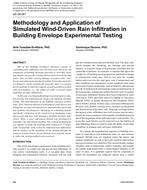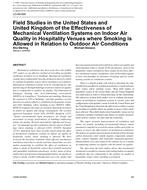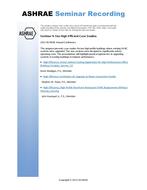Industrial exhuast ventilation, either local or general, has long been one of the most important means of providing protection of the worker from hazardous concentrations of airborne contaminants. Obviously any air exhausted from the workplace or building will be replaced with an equivalent volume of incoming air which, depending upon the climate and the required air condition of the workplace, must be heated, cooled, filtered, or of controlled humidity. If the exhaust system is large in comparison to the building volume, this replacement air should be introduced mechanically and under controlled conditions, and is commonly called a “make-up air system”. Even when there is no make-up air system, the energy considerations are the same because the replacement air will be brought to the necessary condition for the building under either circumstance. Obviously this situation is very energy-expensive.
Recirculation of the exhaust air after it has been adequately cleaned would conserve most of the thermal energy of the exhausted air. If the equipment can be designed so that motors are in the air stream and any external housings or ductwork are well insulated, the energy efficiency can approach 100%.
In past years it has been the policy of official industrial health agencies to recommend against recirculation of exhaust air if the contaminant is a material which may have an effect on the health of the workers, regardless of the efficiency rating of the air cleaning devices used. Even’though the air cleaner used for recirculation is of adequate efficiency, either incorrect operation or poor maintenance, both all too frequent occurrences in’the past, would result in return of excessively contaminated air to the workers. In the past, with abundant supplies of low cost energy, that official position was undoubtedly correct.
As energy supplies get more scarce and more expensive, it is both good economic sense and good national policy to spend more on technological effort, capital, operation and maintenance, if ways can be devised to permit safe return of adequately cleaned recirculated air to the workplace. With this situation in mind, three years ago the Ventilation Committee of the American Conference of Governmental Industrial Hygienists proposed a methodology for permitting such recirculation in a safe manner, at least in principle.
Four major provisos which are discussed in this paper were suggested by the ACGIH Ventilation Committee.
Product Details
- Published:
- 1977
- Number of Pages:
- 10
- File Size:
- 1 file , 840 KB
- Product Code(s):
- D-CH-77-08-1
- Note:
- This product is unavailable in Russia, Belarus


